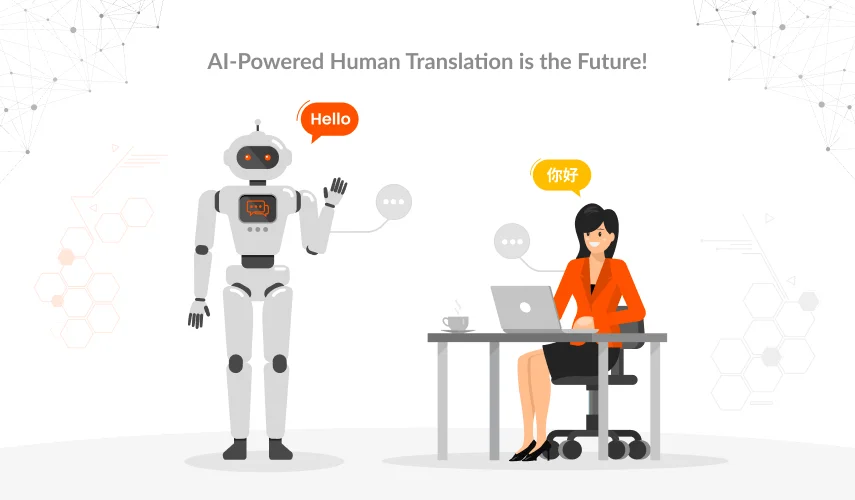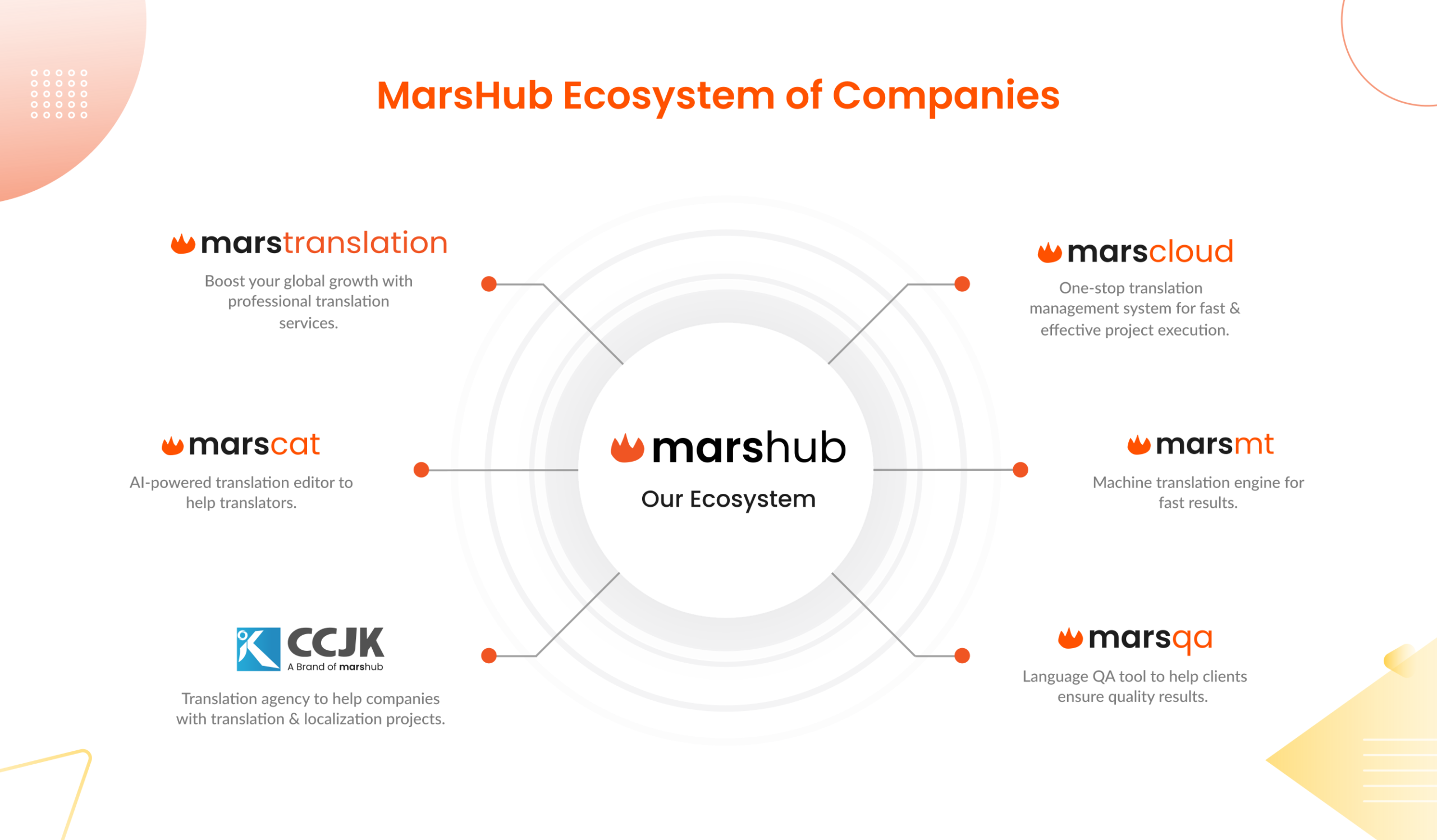Almost every business is going after globalization these days. The global market is, indeed, full of great opportunities for almost all sorts of products and services. However, tapping into a foreign market is not that simple with ever-increasing competition in the global landscape.
More than building a great brand, it is about how you represent your brand to target customers and which stories your brand tells to its audiences. In simple words, localization is all that it needs to make your brand smoothly penetrate local cultures. When it’s about translating your content or localizing your app or website for a foreign market, it comes with many financial, managerial, and execution challenges.
Professional translation management systems have a very good reputation these days for helping enterprises, translators, and LSPs avoid localization issues. Read this blog till the end, if you want to know how cloud-based localization management helps you handle localization challenges and make your overall localization experience fully customized and seamless.
Evaluating the Major Localization Challenges
1. Complicated File Management
When you’ve to deal with plenty of translation documents regularly, it gets a bit tough and over-complicated. You might need to hire extra staff dedicated to file management only, or your translators have to spend a huge time dealing with translation files. It may also result in redundant data that leads to more confusion and errors. Traditional methods of managing translation files require manual efforts that increase the chances of frequent errors and also waste time.
2. Extensive Translation Loads
Managing excessive translation loads, as you hit multiple markets, is quite challenging to deal with. You have to get on board professional linguists who are experts in different language pairs and have native-level proficiency. Of course, it will be expensive, and the more markets you choose to enter, the more money you need to put into your localization project. With that, managing a team of translators and ensuring work consistency is another huge challenge to deal with.
3. Communication Gaps Between Teams
When you are operating in different countries, it is normal that you have a workforce working from different locations. In the case of the translators, most of your employees will be working remotely from their homes. In this scenario, it sometimes gets difficult to get your translation teams together to work as one unit. Project managers may struggle with enabling seamless communication between their localization teams. Moreover, there is a high likelihood of misunderstanding and conflicts between your localization teams.
4. High Cost
Especially, if you are adopting traditional methods to manage and execute your localization project, it may cost you a great deal of money. There will be too much manual work, and you may need excessive human staff for translation, file management, etc. So, managing your finances can be challenging, if you have not tried any automated translation tool yet, and you are totally dependent on a human workforce for your translation project management.
5. Time Management
Human translations are quite time-consuming, and there are always chances of missed deadlines. Similarly, the editing, proofreading, and translation file management processes may also take time. So, you can expect more delays in the completion of your localization project. If you are a language service provider, frequent delays can spoil your reputation in the market. Clients may also start seeing you as a non-credible resource for their localization project management.
How Professional TMSs Can Help Enterprises, LSPs, And Linguists?
As we have evaluated some of the major challenges of localization that most businesses, LSPs, and translators face while dealing with translation project management, it’s time to analyze how professional TMS can help make your overall localization effortless and agile.
Global Enterprises
1. Customized Workflows
Every enterprise has its own unique localization needs, for which they have to develop an infrastructure that fits their requirement and helps them with everyday localization project management and execution. With a professional translation management system, you can always customize your workflow and approach your localization project the way you want. Most TMS providers offer customization options to enterprises and allow you to tailor TMS to their needs. It will surely give you more control over your translation processes.
2. Reduce Time to Market
Time management is a big issue with localization project management because you end up spending more time on human translations. But things can be otherwise if you incorporate machine tools with human expertise. Using a professional machine translation tool can significantly reduce the time required to translate your everyday content load. Now, you are not entirely relying on human translators for translations that will relieve their burden, and they can focus more on producing good quality. Quick translation helps market your product in a new market faster, and you can effectively follow your content calendar.
3. Monitor Team Performances
When your team is scattered around the globe, it sometimes gets difficult to monitor their performances and evaluate their shortcomings. Professional translation systems also come with in-built performance analytics tools that allow project managers to analyze the overall performance of their team at one glance. It also allows project managers to have a clearer idea about in which areas their team is doing well, and where they are underperforming. This way, project managers can better deal with the localization team issues and provide them with the right assistance. It also encourages teams to reach out to project managers and each other whenever they are struck with anything and ask for help from their fellow teammates.
4. Easy Resource Management
As your business grows global, you have to deal with more tools, resources, and documents. Businesses need to manage their resources properly and avoid wasting them unnecessarily. In a cloud-based localization management system, you have all your project resources stored and managed in one place only. You cannot just easily access your resources but also manage them more effectively in a well-organized manner. With the help of these professional tools, resource allocation becomes easier and provides the PM with better control over how resources are distributed, used, and managed.
Language Service Providers
1. Manage High Volumes of Translation
If you are a language service provider working for international clients, it sometimes gets very hard to strike a balance between the different localization projects you are managing simultaneously. Managing extensive amounts of translations can take a toll on your translators, that’s why you better automate your translations. First, it is your choice whether you want to use a TMS for managerial purposes only, or you want to use a machine translation tool to generate quick translations. Most LSPs are already doing it. They get their initial translations done from the MT tool, which is afterward sent to professional translators for post-editing. Only if you know how to approach the machine translation post-editing method the right way, can you effectively manage extensive amounts of translation without compromising quality.
2. Seamlessly Work with Remote Teams
No matter how scattered is your localization team, you can always bring them together through professional TMSs. It is like your team’s digital workplace where they can manage their tasks effectively and also collaborate with other team members in real-time. Through one localization management system, you can manage all your internal and external project teams. It becomes much easier for remote translators to communicate with other in-house teams. Moreover, dealing with freelancers also gets very easy when you use TMS tools.
3. Well Organized Tasks
The best thing about using professional TMSs is that they make your everyday tasks streamlined and properly organized. It eliminates the complicated workflow and keeps things simplified and seamless for your localization teams. Multiplexing is also made easy if your localization teams are on more than one task. Having an organized approach towards localization also saves the time and effort of your teams. There will be fewer chances of any errors and blunders that are quite frequent if you have a traditional approach toward project management.
4. Quick QA Testing
When you have a myriad of documents to be translated regularly, quality sometimes gets overlooked. Everyone gets so much piled up with the excessive workload that quality has to suffer. However, if you are working through a TMS, quality management is not that hard because most tools come with built-in QA testing features. In just one click, these tools evaluate the overall quality of your translated document, as well as provide you suggestions to make improvements. Using these tools, you can significantly enhance the overall quality and readability of your translation documents.
Professional Linguists
1. Easy Collaboration with Stakeholders
Freelance linguists have to deal with so many things regularly, from getting their tasks done to communicating with clients and other translators in their teams. Dealing with multiple clients all at once is not simple. It can easily frustrate translators if they haven’t already automated their translation tasks using a TMS. A professional TMS allows translators to manage their clients, teams, and other LSPs they have partnered with more seamlessly.
2. Create & Manage Glossaries
As discussed earlier, translation management tools can help you with effective resource management, including maintaining brand glossaries. Professional tools provide you with all the necessary features that you may need to create your translation terminology to maintain consistency. So, you can easily create and manage your glossaries from one place only which will save you time and effort.
3. Maintain Translation Consistency
A professional linguist who is managing a translation team at the backend has to get away with translation inconsistency issues. Especially working with multiple clients and translators, sometimes things can get mixed up, and maintaining the unique tone and style of each translation project can be challenging. A translation project management system supports you to manage each localization project in a more organized manner.
4. Work with High Valued Clients
If a translator is working through a professional TMS that has a dedicated community of freelancers, like MarsCloud, it increases their chances of working with high-end clients. All they have to do is, get themselves registered on a TMS as a vendor, and they can get hired by global enterprises who are already on that TMS. So, translators can work with global clients, as well as use the features of TMS for the effective management of their localization projects.
Quick Tips to Choose the Right Professional Translation Management System
Are you looking for a reliable and suitable TMS for your translation project management? Here are a few tips to choose the right TMS to fulfill your needs.
- Get your TMS requirements clear, and write down all the features that you actually need to fulfill your project needs.
- Compare different TMS for features, scalability, flexibility, prices, and overall market reputation.
- Evaluate the credibility of machine translation tools and their overall quality score.
- Look for the systeml that provides third-party integrations, terminology management features, and seamless outsourcing to reliable linguists.
- Choose a tool that comes with data analytics features to give you real-time insights into your project progress.
- Customized translation workflows are always appropriate because they allow you to get more control over your localization processes.
- And of course, choosing the best deal in affordable pricing is something quite challenging. Beware of the hidden costs that come along with your TMS subscriptions. Always double-check the overall TMS prices with your LSP.
Try MarsCloud Today!
Whether you are a global enterprise that wants to capture the international market, an LSP dealing with high-end localization projects, or a freelancer linguist with multiple clients, MarsCloud is your one-stop TMS that gets all your translation project management needs covered under one umbrella. With this professional TMS, you can finish your translation projects in the quickest turnaround time with the highest work efficiency and quality assurance. MarsCloud is quite reasonable in terms of pricing and is designed to streamline your localization operations to ensure seamless project execution.
Register with MarsCloud now, and get your 14-day free trial.



